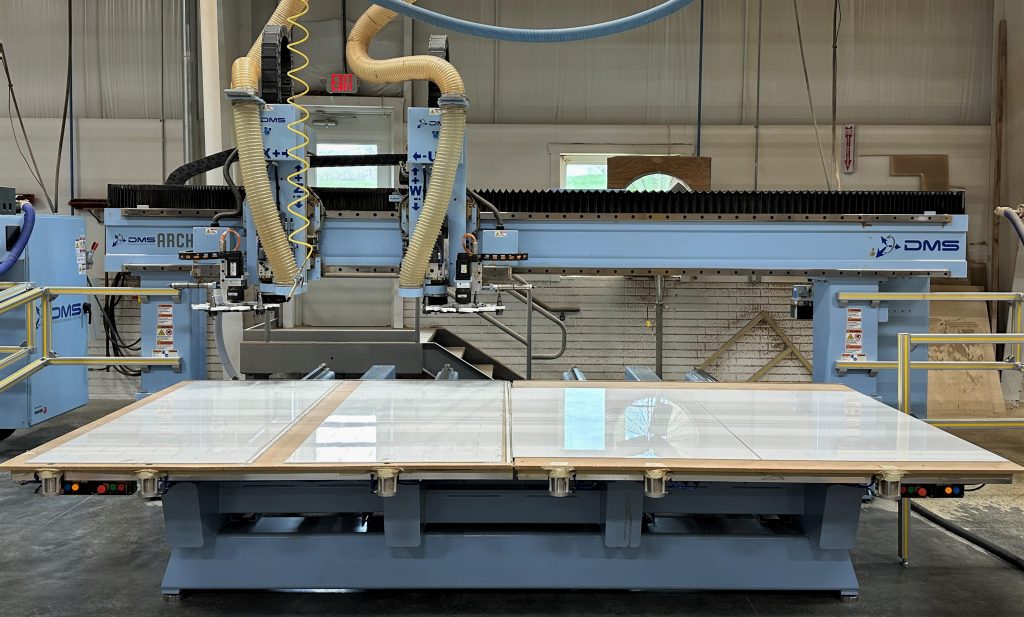Call us now:
CNC technology is one of the fastest-growing manufacturing technologies in manufacturing today.
Let’s explore what CNC routing is and how it can help you in your manufacturing processes.
What is CNC Routing?
CNC stands for “Computer Numeric Control.” Basically, CNC technology is the use of computer to automatically control machining tools such as drills, lathes, mills, grinders, routers, and 3D printers.
A CNC router is simply a router spindle mounted on a frame that moves automatically and is controlled by a computer executing a G-code or M-code program. (G-code and M-code contain execution instructions that are interpreted by the computer and sent to the machine.)

The CNC router works on the Cartesian coordinate system (X, Y, Z) for 3D motion control so by combining motion of the axes, almost any shape can be cut.
3 Axis CNC routers only have motion in the X (left-to-right), Y (front-to-back), and Z (up-and-down) axes, but 4 axis machines add another axis (typically around the X axis) and 5 axis machines yet another axis around the Y axis.
To cut a part with a CNC router, a machine operator puts a cutting tool in the CNC router spindle, affixes the material to the machine table with appropriate fixtures, then allows the machine to cut the material by executing a G-code program.
Applications
CNC routers can cut many different materials including:
- Hardwood
- Plywood
- MDF (Medium Density Fiberboard)
- Masonite
- Composites (Richlite, etc.)
- Poly Wood
- Solid Surface (Corian, Hi Macs, Avonite, etc.)
- Acrylic
- Signboard
- Plastics
- Glass
- Foam
Although some CNC routers may be able to cut metal, this process is typically left for CNC mills, which are similar to routers, but typically feature a heavier build and tighter tolerances than routers.
A few common items produced by CNC routers include:
- Furniture Components
- Decorative Carvings
- Wood Panels
- Sign Boards
- Wood Frames
- Musical Instruments
- Cabinet Parts
CNC routers excel in cutting parts and features that may be difficult to do with more manual manufacturing equipment like saws and other handheld equipment. Features such as curves, slots, dados, and rabbets can but cut at the push of a button.
Benefits of CNC Routing
There are number of benefits to using CNC routing in your manufacturing process.
One of the biggest benefits is the accuracy of the parts that are achievable when using CNC routers. Depending on the machine and material cut, CNC routers are typically able to hold tolerances of 0.01″-0.001″ so ease of assembly and production are ensured. CNC routers are also able to hold these tolerances whether running 1 part or running 10,000 parts so using them in your manufacturing process will increase the consistency of your final product.
Additionally, the CNC routers often allow for a much greater production capacity than manual production. The use of an automated machine can greatly reduce the amount of time that it takes to complete an operation so your lead times may benefit from using CNC routers in your production pipeline.
CNC routers can also reduce waste and material usage. By using a CNC router, operator error is reduced so less material is wasted. Another benefit is the ability to use nesting software which allows many parts to be positioned for optimal yield across many sheets of material.
Finally, outsourcing your production may reduce your labor costs, increase your profits, and increase your production capacity.
Conclusion
In conclusion, CNC routing is a manufacturing method that uses an automated router to cut parts from many different materials.
The consistency, repeatability, and production capacity of CNC routers make them a good choice when you are trying to increase your product quality and production capacity.
If you’re interesting in a CNC routing service, contact us for a free quote.
